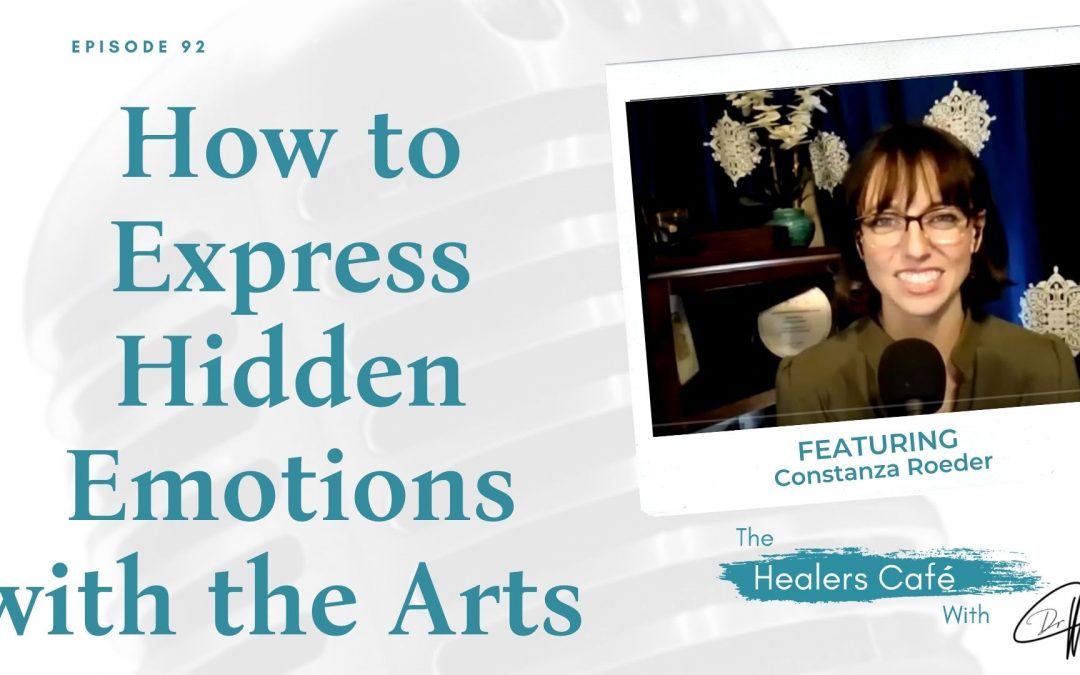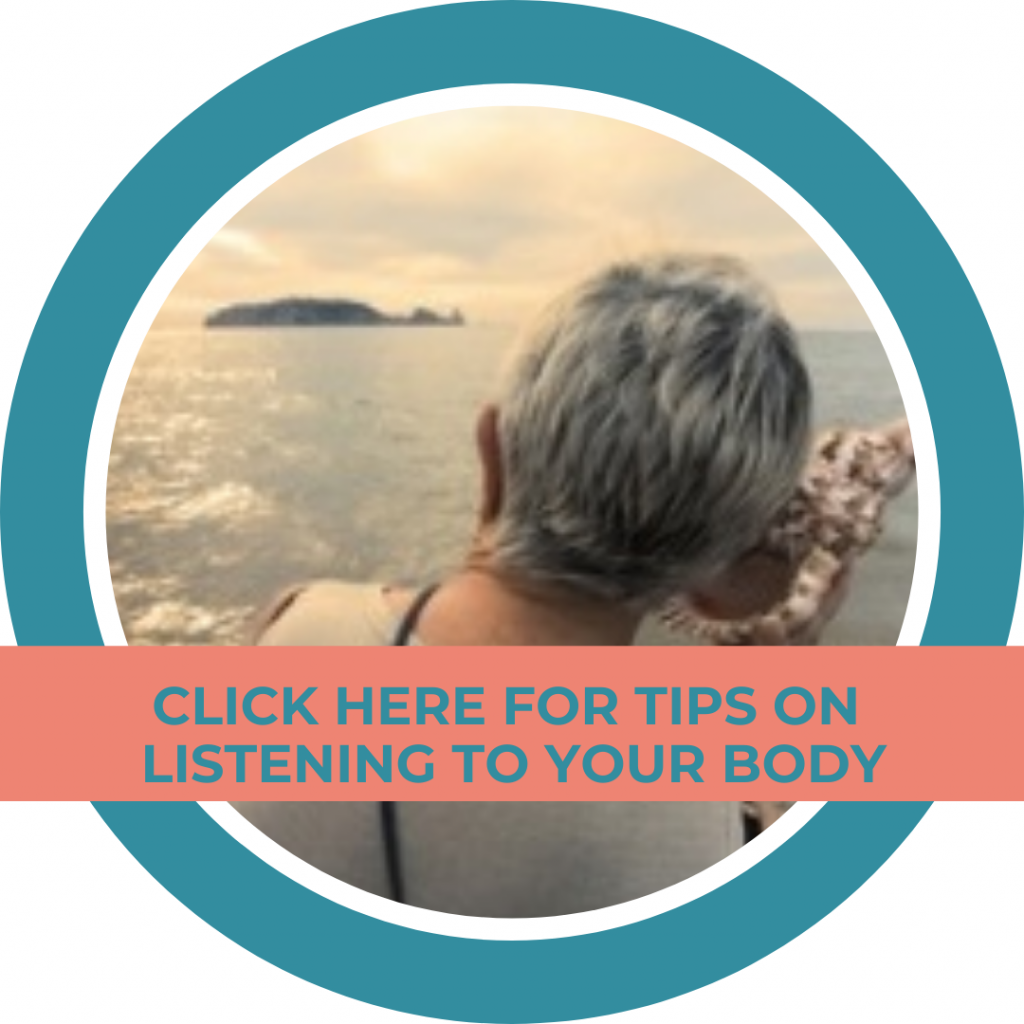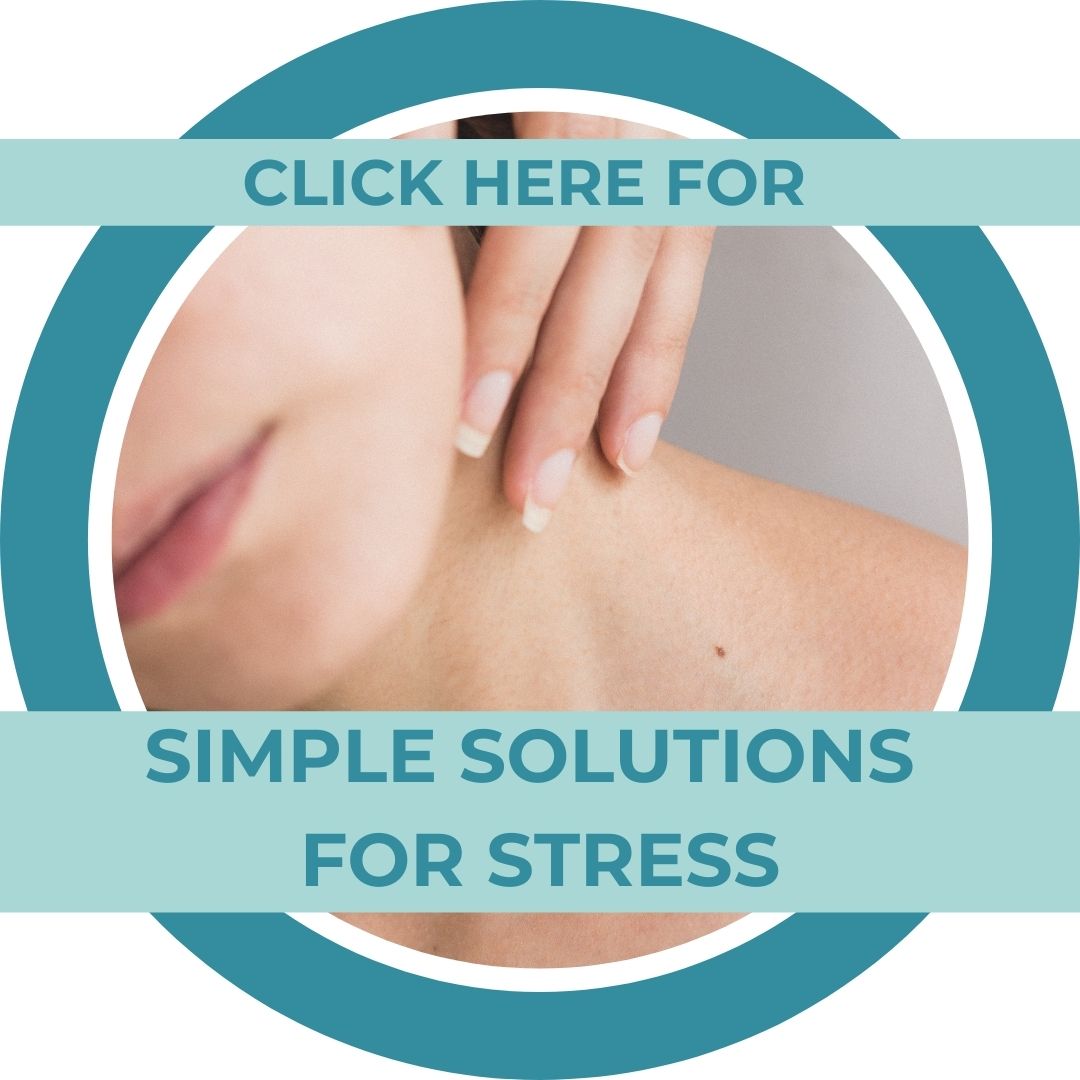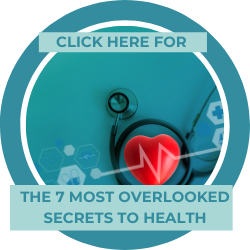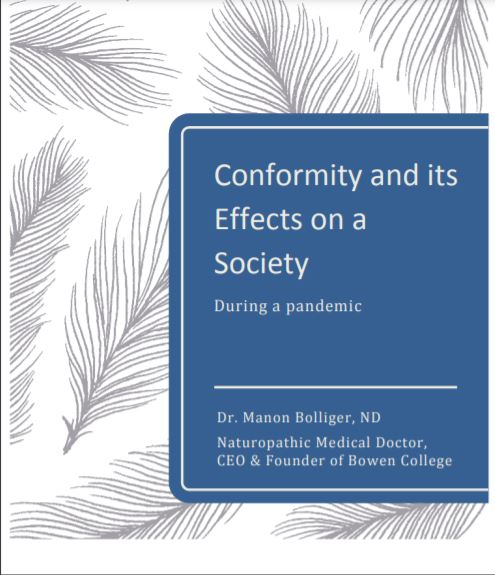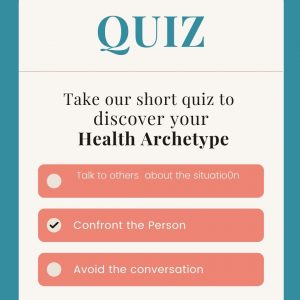How to Express Hidden Emotions with the Arts with Constanza Roeder on The Healers Café with Dr M – Manon Bolliger [ND] (De-Registered*)
In this episode of The Healers Café, Dr M – Manon Bolliger [ND] (De-Registered*), talks with Constanza Roeder, Hearts Need Art: Creative Support for Patients and Caregivers
Highlights from today’s episode include:
Constanza Roeder
having opportunities to externalize hard emotions that would otherwise get trapped in our bodies. Because when we’re going through traumatic experiences, we can’t usually verbalize what we’re going through, at first, because a lot of those memories are encoded in and kind of this, the more subconscious part of our brain and the were more of our visual auditory processes are. And so, when we engage in visual arts, it can help us even for the first time, sometimes realize even what we’re feeling, and then we can then verbalize it and reintegrate the brain
Constanza Roeder
I would listen to Mozart’s Requiem on repeats, that was my jam, and I would cry, and I would get it out. And it made me feel less alone. Because here was this composer that was externalizing what I was feeling was verbalizing in the language of music. What I was feeling that I couldn’t always say or maybe didn’t have the tools to say so eloquently. But then now I’m hearing it reflected back at me. And then I’m like, oh, other people have felt this too. And so, you feel less alone.
Constanza Roeder 25:49
So, if we continue to treat humans like petri dishes, that they’re not whole, complex human beings that have emotional, psychological, spiritual needs, our patient outcomes are going to continue to lag, we can have the best medicine in the world. But if a patient’s brain is too on fire, because they’re scared, and they feel lonely and disconnected, they’re not going to be able to take advantage of all that technology.
BIO: CONSTANZA ROEDER
Constanza is the founder and CEO of Hearts Need Art: Creative Support for Patients and Caregivers and host of the podcast Arts for the Health of It. As a singer, adolescent leukemia survivor, speaker, and thought leader in the field of Arts in Health, Constanza is on a mission to humanize healthcare through the arts.
Constanza is the recipient of the 2018 Graceann Durr Humanitarian Award and was selected as one of the Top 100 Healthcare Visionaries by the International Forum on Advancements in Healthcare for 2021. Her work has been featured in various publications such as ThriveGlobal, Authority Magazine, Ticker News, National Association of Teachers of Singing, and the cover of MD News Magazine.
I have always wanted to help others. I was a teacher for 20 years. I ended up hating my life, hating my job. Anxious to go to work, stressed about stressing. I went to my Bowen therapist for migraines and stress and gallstones; my gallbladder would later come out and she said, “you could do this” and that was the beginning for me. As soon as I had my first practical module, I knew that this is what I wanted to do. I then wanted more….. hypnotherapy came next. And this feels really natural to me. I love calming people down, relaxing them and “fixing” them. I facilitate a women’s once a month and I get so much from these.
About Dr M – Manon Bolliger [ND] (De-Registered*):
As a recently De-Registered board-certified naturopathic physician & in practice since 1992, I’ve seen an average of 150 patients per week and have helped people ranging from rural farmers in Nova Scotia to stressed out CEOs in Toronto to tri-athletes here in Vancouver.
My resolve to educate, empower and engage people to take charge of their own health is evident in my best-selling books: ‘What Patients Don’t Say if Doctors Don’t Ask: The Mindful Patient-Doctor Relationship’ and ‘A Healer in Every Household: Simple Solutions for Stress’. I also teach BowenFirst™ Therapy through Bowen College and hold transformational workshops to achieve these goals.
So, when I share with you that LISTENING to Your body is a game changer in the healing process, I am speaking from expertise and direct experience”.
Mission: A Healer in Every Household!
For more great information to go to her weekly blog: http://bowencollege.com/blog.
For tips on health & healing go to: https://www.drmanonbolliger.com/tips
SOCIAL MEDIA:
– Facebook | Instagram | LinkedIn | YouTube | Twitter | Linktr.ee
About The Healers Café:
Dr. Manon’s show is the #1 show for medical practitioners and holistic healers to have heart to heart conversations about their day to day lives.
Follow us on social media! https://www.facebook.com/thehealerscafe
TRANSCRIPT
Welcome to the Healers Cafe. Conversations of health and healing with Dr. M (Manon Bolliger), ND (retired*).
Manon Bolliger 00:01
So welcome to the Healers Cafe. And today I have with me Constanza Roeder, and she’s the founder and CEO of Heart’s Need Art. It’s a creative support for patients and caregivers. And she hosts a podcast called Arts for the Health of it. As a singer, adolescent leukemia survivor, speaker and thought leader in the field of Arts in Health, Constanza is on a mission to humanize healthcare through the arts, very much needed. And you’re also the recipient of that 2018 Gracie Under Humanitarian Award, and you were selected as one of the top 100 healthcare visionaries by the International Forum on the advancement in health care for 2021. And you’ve been featured all over the place, Thrive, Global, Authority Magazine, etc., etc. Get that. So welcome.
Constanza Roeder 00:17
Thank you for having me here. I’m excited to have this conversation today.
Manon Bolliger 00:19
Yeah, so I’m gonna ask the same question I asked everybody else, whatever got you into, I’m gonna call it the healing arts because literally, if you’re using art, for healing, it is truly a healing art.
Constanza Roeder 01:45
So, I grew up in Santa Cruz, California. And when I was 13 years old, I was diagnosed with leukemia. And my treatment came with 130 weeks of chemotherapy. So, most of my high school years, I was on some sort of treatment for my leukemia. And as you can imagine, that was a really difficult experience. As a young person, it’s difficult for anyone of any age. But the I was really fortunate in a lot of ways to been treated in a pediatric facility, and also in a in a place where I had access to the healing arts. So, for example, there was a nonprofit in my hometown called Jacob’s Hearts, and they offered opportunities for teens and young adults with cancer to come together and create art. And that was a way we expressed, sometimes what felt like inexpressible emotions that helped us tell our stories and connect more deeply with each other. And that was a really profoundly transformative experience for me. And then also, I grew up in a musical family. And so, singing to each other in the hospital, felt very normal, and it made us feel better. So, we did it. And so, the arts for like, is ever really important during treatment, and in getting through that, and then also in the recovery phase of figuring out how to pick up these broken pieces of my dreams and my childhood and moving into adulthood. And, like, what was my life gonna look like now and the arts really gave me a way to externalize that and transform all these pieces into something beautiful, like what was this going to …
Read more...
look like? It was a creative endeavor. And I went on to study music and psychology in school and college. And then I moved to San Antonio, Texas, after I graduated as a married my husband, he’s in the Navy and or he was in the Navy. And we got, we were stationed here. And I started volunteering on an adult oncology unit. And I had never been in an adult hospital before, much less like an adult oncology unit, I’d only ever been in pediatric hospitals was like, where’s the art? And where are the activities and where is the joy and the life and all of the things that I kind of took for granted as a as a pediatric patients in that type of setting. And there a lot of the patients that I worked with, were living on this one unit for weeks and months at a time. And some of the greatest suffering was coming from boredom and loneliness, and just things anxiety and depression of just being in this environment. And I knew that healthcare didn’t have to look like that. And so, I was like, well, I’m a singer, so I’ll just start singing for patients. And I’d go room to room, and I would round with the social workers, and they take me to different patients, and I would sing their favorite music if I knew it. And it was amazing. It was the most sacred and beautiful, transformative work, it was so cool. And when my patients told me every time, I came was like this is great, but we need more of it. We need this every day. And we would like other things too, like visual arts and literary arts and things that I didn’t necessarily know how to do. So, in 2016, I incorporated Heart’s Need Art as a nonprofit here in San Antonio, Texas, and we identify artists and creatives that have a good temperament for this type of work. And we identified them in our local community, we train them how to safely engage with patients and caregivers in a healthcare setting in the arts. And then we bring them into health care spaces, and our programs reduce loneliness and anxiety and depression and pain, and burnout and health care providers reduces the burden of care on that’s on health care providers and other caregivers. And it’s been just the most amazing ride, and we’re about to hit five years old, later this month. And yeah, it’s, it’s been so cool to get a front row seat of, of just the healing power of the arts.
Manon Bolliger 06:12
So yeah, it was fabulous just to hear that now, I’m thinking, two thoughts came to mind. What have you been? Or I don’t know, every state is different, every country is different. But how…what happened during the pandemic, when, at least, you know, some of us were not allowed in? And, you know, and then all of these things, how did you? Or were you able to keep connected to?
Constanza Roeder 06:40
Great question, Dr. M. Um, so we were not allowed in person in the hospitals for 14 months. So, from March 2020, till April, May of this earlier this year, we were finally able to go back in. But when we first found out that we were going to have to be out of the hospital for an indefinite period of time, we’ve converted all of our programming to a virtual format, so that we could continue to work with whoever could actually, you know, whoever had access to us, through zoom, set private zoom sessions with our artists through group arts sessions. And we were live streaming different activities, because we had a lot of participants that followed our social media. So, we just like live streamed a lot of interactive content, and people kind of like, connected with each other through that in those early months of the pandemic, when most of us weren’t leaving our homes. So, we’ve done a lot, we did a lot of different things, to try to continue to connect and serve our different populations. And that was a really, that was a really great time of growth for our organization. And we’ve been able to connect with and support groups from around the country that we wouldn’t have had access to otherwise. And we’re able to continue to support them now, which is great. And now we’re able to provide a continuum of care for our patients that we weren’t able to provide previously. So now. So, like, we were, for instance, with a lot of oncology patients that have multiple admissions in the hospital. So, they might meet our visual artist Hannah in their first admission, and really connect with her. But when they go home in between admissions, they’re too immunocompromised to go out to an art class or to go to a concert or do any really engage in the arts in that way. So now they can go to our website and schedule a session directly with Hannah continue to work with her on Zoom while they’re at home. And then when they come back into the hospital, they just like pick right back up. So, we’re keeping aspects of what we did during the pandemic, because it’s enhancing the work that we’re doing now.
Manon Bolliger 08:59
Mm hmm. Wow, that’s great. I mean, it’s exciting, because it’s not like it had to stop it changed and then flourished. And was there an opportunity to sort of assess the impact it really had? Like, were there any Yeah, you know, research or any interest in actually seeing?
Constanza Roeder 09:24
Sure. Yeah, that’s a great question. And we offer survey to all of our participants after they engage with our program. And we found that…so we met, we ask them questions like Did you know? Did you feel like this program improves your mood or your pain levels or your any feelings of isolation? Did you feel more connected after this activity? Did you feel entertained, you know, things like things like that? And we were using some of those same assessments for virtual activities as well. And we found that there were very similar impacts, which was really great because we didn’t really know what we were gonna find. But the one factor that was consistently lower was isolation that it did, it did positively help people feel more connected, but not as much as being in person, which like, that’s not surprising at all. But people were still reporting that they felt less anxious. And they felt, they felt like they had fewer depressive symptoms and lower pain levels and all the stuff that we were seeing in the hospital, and they’re starting to become…come some research coming out of the pandemic, from the field of arts and health, that is showing some similar stuff. So, it’s great in a pinch, but we would much rather and it’s much more effective to be in person.
Manon Bolliger 10:57
Well, it’s also directly like almost the human contact, right? Like, yeah, whether you’re touching or not, you’re actually really there. You know, it’s different for sure. So, of all the different arts, like maybe what are the arts that were, first of all part of the program?
Constanza Roeder 11:18
Yeah, so we really work hard to build programs around the requests of our patients. So, we started with music, because that’s what I did. But then, you know, they want…our patients wanted visual arts. So, we started our first visual arts class, and we were doing bedside art as well, for those patients that couldn’t leave their rooms. And then we added for a period of time, we did a music and movement activity. And that was really popular for a while and then kind of faded away. So, then we replaced it, people were asking for more writing activities. So, then we brought in a writer and residents, and so it tends to flex and, but we work to find creatives that have a lot of flexibility and a lot of versatility in their art forms and even able to bring in other art forms into their work. So that when, you know, for instance, we just brought a new poet in residence on our team, but she has a lot of background in theater and some music and other right types of writing skills. And so, I’m…that she’s the perfect type of person, because when she goes into a room, there’s lots of things that she can offer. Because patient preference and choice throughout that process is really important. It’s an important, it’s part of that empowering piece where we’re honoring the personhood, you know, which so often is diminished. And when you’re in a hospital and you’re in a healthcare space, you become a diagnosis, they take away your clothes, you’re in, you know, a sterile environment. And not just like, no germs, sterile, but like, doesn’t necessarily look nice, sterile. Um, so yeah, so giving agency and choice back to our patients is really important. And that actually starts at the very beginning of the interaction, whether or not they even want to do the activity. So, we never see no as a failure, like we go in and like, hey, do you want to do X, Y, or Z today? And they’re like, No, and we’re like, Great, excellent. We, they got a choice today, they that may have been the only thing that they could say no to that day.
Manon Bolliger 13:41
It just, it’s making me think with all of this, what’s in common? With all the different arts? I mean, it’s one. Yeah, I think your right choice. It’s like, I decided to do this or not, but and then I choose which one, but it’s really, it’s about creation, right? It’s using creativity. And creation, puts you in another space, you know, emotionally and mentally, when you’re creating, you’re actually participating in a completely different way than so called entertainment, where you’re the recipient of watching a show, but it can be fun, but you’re not necessarily in the creative energies. Right? So, I want to get some piece of all of the…
Constanza Roeder 14:33
Yeah, each art form kind of has a different vent and a different way it impacts and impacts us when we engage in it. And the setting that we in which we engage in it also affects how it impacts us. So, we…what I could sing by myself and that has physiological impacts on my body. It helps to stimulate my parasympathetic nervous system. helps to boost endorphins, positive endorphins in my brain, it helps to lengthen my exhale, which is a very calming experience for the body. So that those are all beneficial things. But when I join a choir and I’m singing with other people, there’s a whole added dynamic that is added on top of just the individual act of singing. So, the type of arts we’re using, and the setting of that we’re doing the arts in will have different impacts. But yeah, there’s that element of excuse me, of expressive expressivity. So having opportunities to externalize hard emotions that would otherwise get trapped in our bodies. Because when we’re going through traumatic experiences, we can’t usually verbalize what we’re going through, at first, because a lot of those memories are encoded in and kind of this, the more subconscious part of our brain and the were more of our visual auditory processes are. And so, when we engage in visual arts, it can help us even for the first time, sometimes realize even what we’re feeling, and then we can then verbalize it and reintegrate the brain. And that’s really incredible for Trauma Recovery and has lots of applications in, like PTSD recovery for war veterans, for…
Commercial Break 16:35
Hi, I’m Dr Manon Bolliger, and I wanted to take a moment to thank you for watching these podcasts. If you haven’t subscribed, please do. Also feel free to leave comments and like it. This way more people get to find out about this work and about other choices for health. So, I think it’s really important that we all share this information, I have a free gift to you. It’s a seven sequence email that has tips for every day, and a little insight about how to live your life when it comes to health. And it’s very much built on how I managed to overcome stage four cancer and what it took. So, I would love you to have this. And thank you once again for listening to these podcasts.
Constanza Roeder 17:37
For example, so there is x, there’s X expressive part of it that is so important for just general mental hygiene, mental health hygiene, we might…I might say. And then like you said that, that there’s the passive forms as well, where when we’re taking in other people’s art, there’s something else that happens. So, when I for example, when I was sick one of my and I was really feeling gloomy. I would listen to Mozart’s Requiem on repeats, that was my jam, and I would cry, and I would get it out. And it made me feel less alone. Because here was this composer that was externalizing what I was feeling was verbalizing in the language of music. What I was feeling that I couldn’t always say or maybe didn’t have the tools to say so eloquently. But then now I’m hearing it reflected back at me. And then I’m like, oh, other people have felt this too. And so, you feel less alone. And then take that into the hospital where, you know, let’s say I go in and I’m working with the patient. They don’t have the energy to do anything participatory. They’re just barely awake laying in their bed. They’re not going to be writing that day or doing a music lesson that day or anything. But let’s Okay, so let’s connect over like what’s your favorite music? What do you like to hear and listen to? And why do you like to hear that? Hear those songs? And then let me play it for you. And from what I see is it’s the difference between saying I love you to someone and singing I love you to someone. And music is such a whole brains activity listening to music. It lights up the whole brain and it imprints trues on our hearts that at levels that we can’t get to really in any other way. So, it’s…I know this is a long winded answer to your comment but it’s…they’re complex interventions that have ripples, effects and kind of holistic impacts to the person to their spirit to their emotions to their body to the community around them.
Manon Bolliger 19:59
Hmm. I mean, that has to have an impact on me like, There’s no way around that. Yeah, yeah. And, you know, often it’s not like, yeah, when you look at just the physicality of okay, here’s take these drugs or even take these vitamins, you know, vitamins, you know, can be because you’re missing them, and we need them. They’re substrates. Sure. But yeah, it’s a whole other world when you sort of realize that we have we have body mind, spirit, we have oneness, we have connection, we have vibration. You know, there’s so much more going on. So, I don’t know if all of your experiences are through the people working in your team. What’s this one example? Or a story that really? Yeah, just gave you? Yeah, just gave you further commitment to the impact you’re having.
Constanza Roeder 21:04
Gosh, it’s so hard to document it’s really hard to picture. Every, every time I go in and play music with patients, it’s a spiritual, transcendent experience. And that is addictive and a lot of ways because, through, you know, so much in our everyday life there, there’s just can I use a cuss word on your podcast was rather me rephrase. This is a lot. There’s like a lot of bullshit that is in kind of normal life. But when you’re on…when you’re in a hospital, when you’re on like an oncology unit, people are facing life and death. And you’re going in during these tender moments of someone’s life, and you’re singing their favorite music to them. There’s nothing else like it. And it’s the most beautiful, and sometimes brutal work. But I will say, I’ll share one story that kind of connects with the comment you made just a minute ago, about kind of like, we’re this whole, these holistic people. When I was, you mentioned the award I received earlier this year, top 100 Healthcare Visionaries. Like when I went to go receive the award, I got to meet the other awardees. And we had lots of sessions and discussions with each other. And one of the main concerns that kept coming up over and over from the medical side, the medical side of it was compliance. We can’t get patients to do what they need to do. Wow. And, and I just got the impression that they were just frustrated because the humans weren’t behaving like their, their data models said that they should, we’re supposed to like just do the thing, and then they’ll do the thing. And then that’s the thing, and then they get better. And it made me think of this one interaction that I had with a patient and this, this is just an example of something that happens fairly often. When we’re on the unit. health, the health care team, the nurses, the doctors will come and find us and refer patients to us for various reasons. And one of the common reasons that we receive referrals is for patients that are either really crabby, maybe even combative and non-compliance and that just aren’t jiving with her care team. And they come in and like hey, can you like play music? So, this one day went in and thrown off, a nurse came and found me and there was a patient on the BMT unit, the bone marrow transplant unit, who had refused to take a shower for four days. This is the fourth day that he’d refused to take a shower. And that’s a real health risk. Because when you go through bone marrow transplant, you have no immune system. And daily showers are essential to prevent hospital borne infections. So, he had refused to take a shower. He had kicked his doctor out of the room, he had kicked his nurse out of the room, he wouldn’t let anyone in his room. He wasn’t he didn’t take his meds that day. And they didn’t know what to do about it. And they’re like, hey, this is a situation. Can you go in and just like, see if he’ll let you play music as non-threatening, right? You’re not trying to get him to do anything. It’s like, Sure. And so, I went in, I knocked, and I was like, Hello. Who is it? Um, it’s it Stanzi. I’m here. It’s like with the Arts team. Would you like to hear some music? And he’s like, oh, sure, you can come in. So, I went in with my little keyboard and I set up some of my stuff and was like, well, what kind of music do you like, and he shared about classic country and older years and all this all this music and all this history, and how it connected with his life. And then we played it and we were singing and laughing and clapping and having a great time. And when I left, the nurse went back in and he agreed to take a shower, he agreed to take his meds, he agreed to let his doctor come back in and examine him. And I think what happens so much when we’re going through hard experiences, when we’re going through trauma, we put up armor, to protect ourselves because we’re scared. And so often that happens when we feel disconnected as well. And what these types of music interventions do is the music has its way of kind of flowing through the cracks in the armor, and caressing the person behind the armor, and help them feel connected with and heard and seen in a really profound way. So that they can feel safe enough to start to let down some of that honor and make better decisions for their health and well-being.
Constanza Roeder 25:49
So, if we continue to treat humans like petri dishes, that they’re not whole, complex human beings that have emotional, psychological, spiritual needs, our patient outcomes are going to continue to lag, we can have the best medicine in the world. But if a patient’s brain is too on fire, because they’re scared, and they feel lonely and disconnected, they’re not going to be able to take advantage of all that technology.
Manon Bolliger 26:15
Yeah, no, absolutely. It’s like, we’re far more than a stat, you know. You look at what the stats are on whatever condition or disease, it’s like, really, where did they get that? Because, you know, I know from friends, and also patients who have, you know, have had cancer or have had to deal with that. It’s like, all they’re looking at did the drug work? They didn’t ask, what else in your life did you do or change? Or what were the circumstances? Did you know, did you do anything? And it’s like, so many have said, no, no, they had no interest in anything about me or my life, just on, you know, whether I’m going to accept this, this chemotherapy, that’s, and it’s very hard, because I agree, that couldn’t be better results with any medicine. Once you start treating people as people and maybe even reduce some of the medicines, because you’re not fighting against the person, right? Like it, you know, I do think there’s no such thing as this is the quantity and therefore it has this impact. I think we there’s a big, you know, discrepancy between our ability to absorb anything if we’re completely closed.
Constanza Roeder 27:44
Absolutely.
Manon Bolliger 27:46
Yeah. It’s very interesting to. I love how you’re explaining the way that music sort of goes in and cuddles, it’s in my own words. Those your, your wound itself really your vulnerable part, you know, yeah. And makes me think to how many times people listen to music that, make them cry, you know, and, and, you know, people often say to them, and I’ve heard this so many times, I will just listen to something happy, but it’s like, no, no, if you really know that if people choose their music, right, yeah. You know, if you if you need to cry, it’s doing something it’s like, you know, in the law of homeopathy is like yours. Like, if you are giving something similar, like in your situation, where you’re the vibrations, the intensity, the beat, all of that is resonating, literally, with the unspoken word inside your body. You know that you’re, you’re helping yourself, right. And I think, you know, patients know that. Yes.
Constanza Roeder 29:06
It’s funny, you mentioned that because when we have when we’ve had guest musicians or groups in the past, come and play music, wanna play music for our patients. We have to brief them before they come to the unit, especially when they come to the oncology unit. Because they think what you just said, like, oh, we’re gonna bring happy, uplifting music and it’s gonna, they’re gonna make people better. And I’m like, no, that’s like, have you ever been really sad and heard laughter? Like, it’s painful. It’s painful. But when, like you’d like heals, like when someone comes along and reflects back what you are feeling and sits in that uncomfortable space with you. It’s incredibly powerful. And you know the, if you’re familiar with the Disney movie Inside Out, have you seen it? Where like sadness just goes and sits next to whole, like the imaginary character I can’t remember. Anyway. And that’s what made him happier. Like when she just went and sat with them. And she’s like, Yeah, that’s the sucks. And yeah, that’s sometimes what we need to do. And I think one of the more profound moments, we had a member from our San Antonio Symphony come, the group, Little Duo. And they brought music from Schindler’s List. Well, and they were has, they were hesitant about it, they’re like, we brought this, we didn’t know if it was appropriate. And I was like, they’re gonna love it. And they just because, like, it was so reflective, and then give them this cathartic safe space to, to release and have this moment of anyway,
Manon Bolliger 30:55
It’s really, it’s a principle of nature, right? Like, you know, when Hahnemann invented homeopathy or he’s the father of this system of medicine, it is, like curing like, so what you do, you give a little bit of the same, which allows the person then to kind of overcome what they’re experiencing. Right? And this is true of whether it’s flus or your any similarity, it can’t be flu remedy. It’s like, how do you live your flu? Or do you have diarrhea? Or do you have, you know, hallucinations on high fever or whatever it is, but it’s like, it’s the unique expression of how we are. And then these remedies, there’s about 5000 of them, you find the one that’s the most like their current state, and then the body just in a sense, expels that it’s like, okay, that’s just more than enough right now. And, and it just ignites the, you know, your immune system and your innate healing intelligence, and people get better. So, it’s actually it’s interesting. I’ve seen it in music but listening to you. I really, I get that now on a whole other level. So, I really appreciate that.
Constanza Roeder 32:21
Well, thank you for describing that. That connection with naturopathic medicine. That’s really cool.
Manon Bolliger 32:27
Yeah, it’s homeopathy specifically.
Constanza Roeder 32:29
Yeah, I’m sorry.
Manon Bolliger 32:31
But yeah, our time is up. So, I’ve learned so much and thank you for the work you do.
Constanza Roeder 32:41
Of course, thanks for chatting with me about it. Great.
Dr M – Manon Bolliger [ND] (De-Registered*)
Thank you for joining us. For more information, go to DrManonBolliger.com.
* retired, revoked & deregistered. Now resourceful & resolved to share with you all the tools to take care of your health & vitality!
